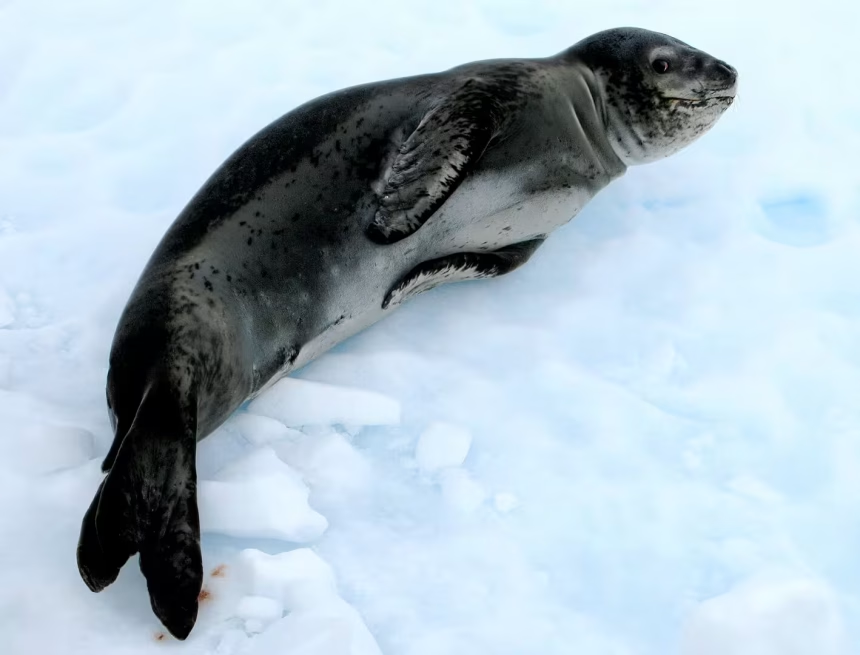Where does the leopard seal live?
The leopard seal inhabits the cold waters of the Southern Hemisphere, including the Southern Ocean (Antarctic Ocean), the South Pacific Ocean, and the South Atlantic Ocean. It can be spotted along the southern coasts of Argentina, Chile, Australia, New Zealand, and South Africa. During the austral winter, young leopard seals migrate north, while the older ones remain in the icy waters south of the 78th parallel. When not hunting in the water, the leopard seal enjoys resting on the pack ice or small drifting icebergs.
What are the predators of the leopard seal?
The leopard seal is not a top predator; it falls prey to species like the great white shark (Carcharodon carcharias) and orcas (Orcinus orca). Humans can also be a threat to this large seal. The Convention for the Conservation of Antarctic Seals (CCAS) permits the hunting of up to 12,000 leopard seals per year. However, the International Union for Conservation of Nature (IUCN) does not consider this species endangered, with an estimated population of around 300,000 individuals.
How fast can leopard seals swim?
An excellent swimmer, the leopard seal can reach speeds of up to 30 kilometers per hour in the water. Its streamlined pectoral flippers allow for precise steering, while a powerful tail fin provides propulsion. Its hydrodynamic body, with a smooth head and a neck that seamlessly extends from its torso, aids its movement in the water. The leopard seal can hold its breath for an hour and dive to depths of up to 100 meters.
Despite weighing up to 600 kilograms, it has enough power to leap two meters out of the water. However, it is much less agile on ice.
What does the leopard seal eat?
According to researchers, the leopard seal’s diet consists of about 45% small crustaceans (krill) and 35% young seals. This predator hunts other seal species, such as the crabeater seal (Lobodon carcinophaga) and the Weddell seal (Leptonychotes weddellii). It also preys on sea lions, fish, and birds, including rockhopper penguins and other penguin species. Some individuals are capable of consuming dozens of penguins per day using refined hunting techniques. As an opportunistic predator, the leopard seal may also feed on whale carcasses.
Is the leopard seal dangerous?
The leopard seal is often regarded as the most aggressive of the Antarctic seals and is feared by explorers and biologists. With its powerful jaws and sharp teeth, it can bite and puncture inflatable boats. In 2003, a British researcher drowned after being dragged underwater by a leopard seal—the only recorded fatal attack to date. Since then, some organizations, such as the British Antarctic Survey, have instructed their divers to exit the water immediately if a leopard seal is spotted nearby. However, this is merely a precautionary measure, as observers note that the leopard seal’s curiosity often outweighs its aggressiveness.


